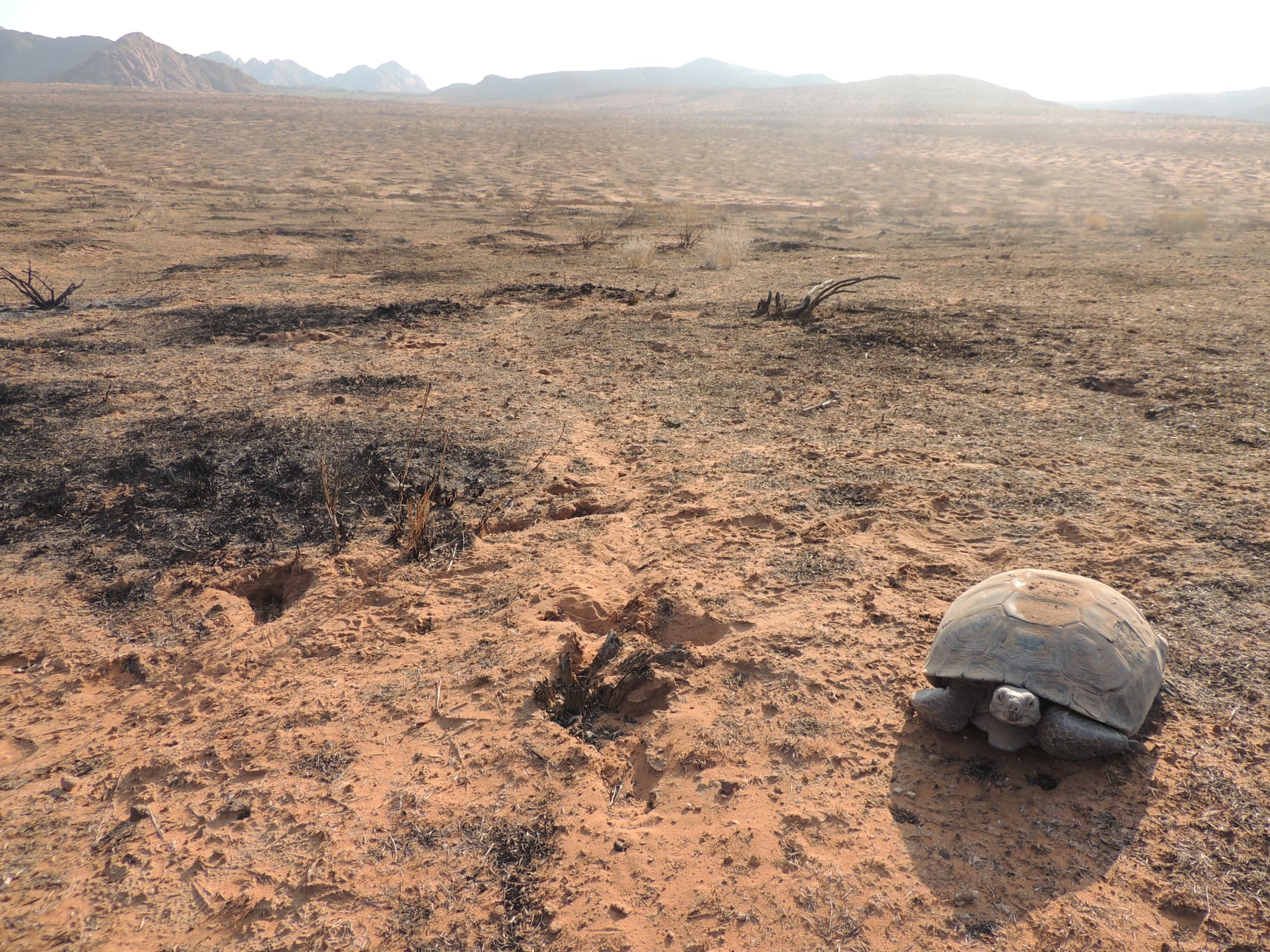A Mojave desert tortoise (Gopherus agassizii) was observed during a Utah Division of Wildlife Resources fire destruction survey in southern Utah with
A Mojave desert tortoise (Gopherus agassizii) was observed during a Utah Division of Wildlife Resources fire destruction survey in southern Utah with burn scars from the most recent Turkey Farm Road fire in July and the 2005 Mill Creek fire.
The Utah Division of Wildlife Resources posted the news and photos on its Facebook page. The images detail flaking layers of laminae on its scutes, which are old burn marks.
“Our biologists are working within the Habitat Conservation Plan and partnering with the Bureau of Land Management to conduct surveys in the areas burned by wildfires to assess their impacts to the desert tortoise populations still, but they were happy to see this survivor out there roaming still,” the Utah Division of Wildlife Resources wrote on its Facebook page. It is also written that the desert tortoise must have a stable and deep burrow to survive a fire and must remain in the burrow until the ash surrounding the burrow cools down.
It’s #WildlifeWednesday — a good day for a survivor story. The tortoise pictured here was recently spotted during a…
Posted by Utah Division of Wildlife Resources on Wednesday, September 23, 2020
The desert tortoise ranges from the Mojave and Sonoran deserts in Southern California and can also be found in Arizona, Nevada, Utah, as well as in areas in Mexico. It grows to about 8 to 10 lbs. and eats mostly weeds and leafy weeds in the wild. The desert tortoise is a protected species and it is speculated that more desert tortoises can be found in captivity than in the wild.



